David Clough explains how the Class 57s came into being, and reviews their continuing relevance to today’s railway.
When diesel motive power was divided between operators in the lead-up to railway privatisation, Freightliner received an allocation of 125 Class 47s, of which seven were stored and four withdrawn.
David Clough explains how the Class 57s came into being, and reviews their continuing relevance to today’s railway.
When diesel motive power was divided between operators in the lead-up to railway privatisation, Freightliner received an allocation of 125 Class 47s, of which seven were stored and four withdrawn.
These were generally well-advanced in their maintenance cycle, but they had to handle some heavy trains and were seen as unreliable.
It took until 1997 for the company to announce plans to address the situation.
During the 1980s, BR’s engineers had judged that the Class 47 engine was becoming beyond long-term overhaul, and Brush Traction privately had discussions with General Motors to offer a re-engineering project based on the substitution of a GM power unit.
The project was dropped because it was judged too much of a hot potato, but was revived after rail privatisation in 1994.
Using this as a basis, Brush and Freightliner collaborated with Porterbrook Leasing Company Ltd (Porterbrook) to produce a proposal that was considerably cheaper than a new Class 66, and Freightliner agreed to lease an initial batch of six.
The project’s most eye-catching element was replacement of the Sulzer LDA28C engine (then rated at 2,580hp) with a reconditioned General Motors EMD 12-645E3 unit (rated at 2,500hp). The engines were bought second-hand (and overhauled) from North America.
Coupled to the engine was a refurbished Brush Traction alternator set, out of redundant examples of Class 56, in substitution for the previous Brush main generator. It was these changes that led to the resultant locomotives being dubbed ‘bodysnatchers’.
With these locomotives over 30 years old by then, their interiors were refurbished and improvements made to the cab environment, while the cab front route indicator panel was plated over to eliminate draughts.
The running gear used for 57001 came from a Freightliner Class 47/0 to keep costs down, but later conversions received overhauled equipment.
Freightliner decided to impose a maximum permitted speed of 75mph, despite there being no technical reason for the reduction from the 95mph permitted to Class 47s. The new limit brought the locomotives in line with that of its intermodal trains.
Updating the wheel slip protection system included fitting speed probes on the bogies. The addition of rail sanding gear made for a more sure-footed performance, and therefore more able to haul heavy loads in poor rail conditions.
The fuel tank capacity was increased from 720 to 1,220 gallons, and this, together with the other changes, gave a useful increase in weight to 120 tons.
Previous reports about the class claim an increase in tractive effort. This is incorrect, because a Class 57/0 has slightly less installed power than a Class 47, while retaining the latter’s traction motors and motor gearing.
The assignment of a Type 5 power classification, which should mean a locomotive with at least 3,000 engine horsepower, came from Brush, claiming that the improved wheel slip protection and use of sanding gear made the converts equal to a Type 5 in all-weather tractive power. The maximum tractive effort is 55,000lbf, whereas that for Class 47 is 60,000lbf.
Satisfied with the conversions to 57001-006, which provided greater reliability and all-weather tractive capability, Freightliner ordered six more in June 1999, with a possible order extension for a further 25.
This order extension did not happen because Freightliner opted instead to order Class 66s, which had started to enter service with English Welsh & Scottish Railway (EWS).
As Freightliner’s business developed, the company returned its Class 57s to Porterbrook at the end of the lease in 2008, and they were taken by Direct Rail Services (DRS) and West Coast Railway Company (WCRC).
By then, 57001 had suffered a major engine failure and had been sidelined for over a year, while other examples had been stored owing to being non-standard within Freightliner’s expanding Class 66 fleet.
The next significant development was Porterbrook’s decision to convert 47825 into a Class 57 with an electric train supply (ETS), to assess the market for such a locomotive.
At the time, three train operating companies were using Class 47s for passenger work, but were experiencing a decline in reliability.
Numbered 57601, the prototype appeared in 2001 in the company’s branding and house colours of silver and purple. And following shakedown trials, it went on hire in March to First Great Western (FGW, now Great Western Railway - GWR).
Essentially, 57601 went through the same re-engineering process by Brush as 57001-012, with fitment of the same model of engine and main alternator.
Intended for passenger duties, sanding gear was not deemed necessary. But the provision of electric train supply (ETS) equipment was added to give an ETS index of 95, while the maximum speed remains 95mph. The standard Class 47 fuel tank capacity of 720 gallons was retained, and the resultant locomotive weight is 113 tons.
In 2003, Porterbrook sold 57601 to WCRC, although it remained on hire with FGW until a replacement became available. FGW had no long-term use for the locomotive because it was non-standard.
EWS had bought Class 67s in 1997 for mail and passenger duties, and these four-axle locomotives had a top speed of 125mph and an ETS capability.
There were several reasons why FGW ruled out the type as replacement for the Class 47s on the ‘Night Riviera’.
Firstly, Jim Fisk of EWS had negotiated an attractive track access charge with Railtrack for the Class 67s, mindful that they are very heavy for a 4-axle locomotive (at 22.5 tons per axle).
At the time, that rate was not transferable to any other operator, which would have meant transferring the Sleeper operation to EWS. And even if FGW had accepted Railtrack’s much higher track access charges for Class 67s, EWS was not interested in selling any.
The second factor was Porterbrook’s enthusiasm to lease more Class 57s. FGW had been operating 57601 on the West of England daytime locomotive-hauled services, and at a time when the Class 67s were getting some bad press, the operators and engineers were very impressed by this locomotive.
Finally, Porterbrook offered a more attractive commercial deal than EWS.
A later model of the GM EMD 12-cylinder two-stroke engine (coded 12- 645F3B) was fitted. This delivers 2,750hp, a useful uplift to compensate for power used for train supply. Again, these power units were bought second-hand from North America and refurbished.
There was an increase in fuel capacity to 1,295 gallons, which was in line with the twin fuel tank Class 47/8s of the 1980s. The ETS index was raised to 100 and maximum speed remained 95mph. 57602-605 were converted from redundant Class 47/0s.
The quartet entered traffic between November 2003 and September 2004, and are used almost exclusively on the ‘Night Riviera’ service between Paddington and Penzance.
This is a 360-mile journey, undertaken by two locomotives on each of six nights every week, powering the Up and Down trains - which makes the sub-class the most intensively used ‘57s’ at present.
Just over one year after 57601’s appearance, in June 2002, Virgin Trains unveiled the first of its Class 47 conversions to Class 57, again under Porterbrook auspices.
These had two uses. Firstly, they were to be used to haul Class 390 Pendolino electric multiple units (EMUs) when overhead electric power was unavailable, such as over diversionary non-electrified lines.
The other use was as ‘Thunderbird’ rescue traction on the West Coast Main Line in the event of the failure of a VT Class 390, a ‘220’ or ‘221’. They were stationed at strategic points along the route.
Wishing to use the theme of the Thunderbirds television programme, VT wanted a number series beginning at 01, which is why these 12 locomotives are numbered upwards from 57301-312.
As part of the West Coast upgrade work between 2005-08, the Strategic Rail Authority ordered a further four (57313-316), to provide increased resources for towing Class 390s during diversions away from the normal route.
When VT operated these EMUs on Euston-Holyhead services, Class 57/3s towed the train forward from Crewe.
From a technical standpoint, these Class 57/3s are identical to GWR’s 57602-605. But by virtue of the planned duties recovering failed Class 390s, ‘220s’ and ‘221s’, a retractable Dellner coupling was fitted onto the cab front.
In the case of 57301-312, the work was done retrospectively by cutting a recess in the cab front, whereas the coupling was fitted during conversion on 57313-316. The coupling folds away in a vertical position when not in use and adopts a horizontal position when needed. The movement is by push button in the driving cab.
By 2011, VT was diagramming Class 221s on some services, in place of Class 390 on days when there were diversions off electrified routes. This enabled the operator to reduce its Class 57 requirement by six.
Off-hired 57301/303/305/306/310/312 were leased from Porterbrook by Network Rail, to act as ‘Thunderbirds’ with third-rail EMUs on former Southern Region metals.
NR and Porterbrook spent a colossal sum of money adapting the locomotives to rescue every conceivable type of EMU. This involved fitting brake translator units and new coupling heads to allow the locomotives to interface with the various different classes.
The locomotives were painted yellow and were retained for about four years. During this time, they were also used on other work, such as for seasonal railhead treatment and route inspections.
Cost-cutting by NR resulted in their return to Porterbrook, which subsequently leased them to DRS.
During their time with DRS, 57301/ 303/305/310/312 were sub-leased to Rail Operations Group for EMU works moves, with the translator equipment being ideal for this purpose.
DRS has since returned these to Porterbrook as part of its Class 57 fleet reduction plan, and they are now with new operators (see table). Most have been leased to GB Railfreight (GBRf) and continue to find use on rolling stock moves.
At the time of writing, 57301 remains on DRSs’ books, pending wheelset and other attention, before return to Porterbrook.
GBRf’s 57312 is on a long-term sublease to GWR to act as a Thames Valley ‘Thunderbird’, primarily when there is a problem with the overhead line equipment.
It is also used occasionally as the pilot between Reading depot and Paddington on the ‘Night Riviera’ - and even takes the train through to Penzance to ‘stretch its legs’ and give the locomotive a good run.
VT returned its remaining ‘57s’ to Porterbrook in 2012, and 57313-316 were bought by either DRS or WCRC.
DRS took the others on lease, and of these 57302/304/307/308/309/311 were used to service the contract with VT for failed train recovery and other duties. Subsequently, DRS off-hired 57302/311, and retains the remaining four for West Coast rescue work.
Most of the former Freightliner Class 57/0s are now owned by WCRC, but perform little work.
57010 and 57012 have had stints at Newark Northgate as East Coast Main Line ‘Thunderbirds’, while the two-tone green 57009 has performed occasionally on passenger work. In April, all bar 57010 (which is at Nemesis Rail) were at Carnforth, and some are for component recovery only.
The other Class 57/0s not owned by WCRC are now the property of Locomotive Services Ltd. Of these, 57004 was cannibalised by GWR for spares for its forthcoming ‘G’ exam programme on 57602-605, and one report says the locomotive has now been scrapped.
Other operators of Class 57s have been the short-lived Advenza Freight, Arriva Trains Wales (ATW), and Colas Rail.
ATW used its examples of Class 57/3 for passenger duties, while the other two deployed their locomotives on freight work.
About the author: David Clough has been photographing Britain’s railways since the 1960s and writing about them from 1975. He has been a regular contributor to RAIL since January 1983 and is the author of 16 railway books.
For more articles like this, Subscribe today and never miss an issue of RAIL. With a Print + Digital subscription, you’ll get each issue delivered to your door for FREE (UK only). Plus, enjoy an exclusive monthly e-newsletter from the Editor, rewards, discounts and prizes, AND full access to the latest and previous issues via the app.
Login to continue reading
Or register with RAIL to keep up-to-date with the latest news, insight and opinion.

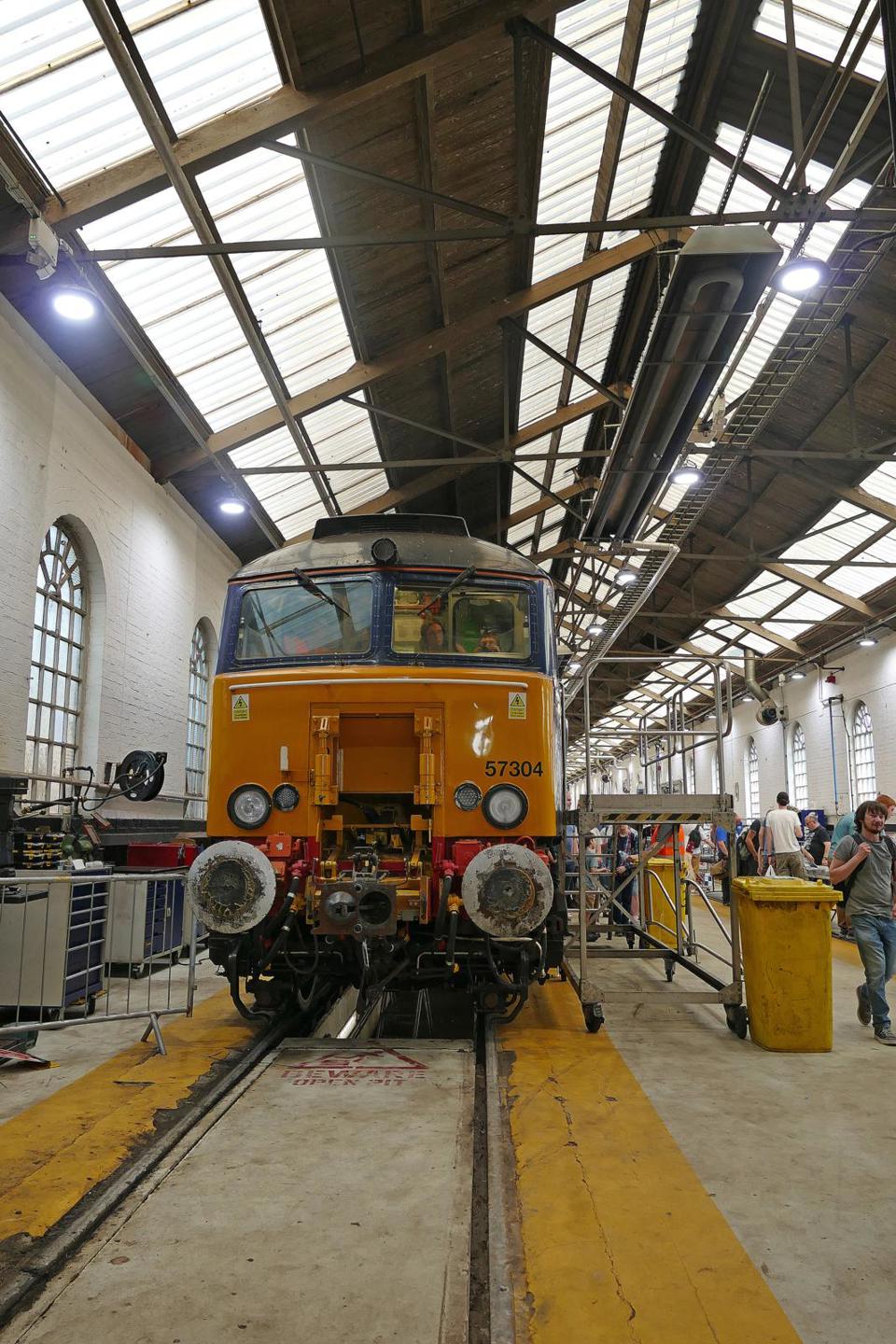

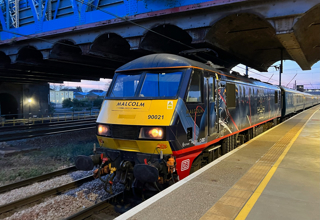
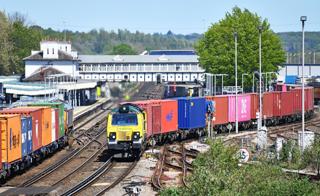
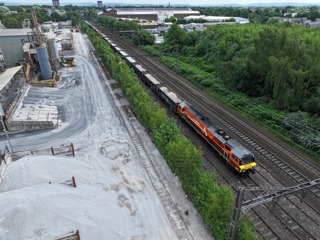
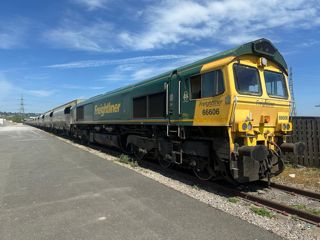











Login to comment
Comments
No comments have been made yet.